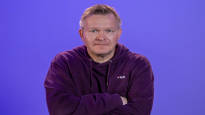Olympic medalists in wrestling are on average 27 years old. A single athlete born in 1995 owns a wrestling license in Finland. This tells about the problems of all traditional sports, writes Pekka Holopainen.
Pekka Holopainen sports reporter
The year 1995 was significant in Finnish sports history above all because of the first World Cup gold medal in ice hockey. In its birth year, it didn’t rise to the best A-class, but among the 1995 parkaises, e.g. Hannes Björninen, Niko Ojamäki, Ilkka Herola, Reetta Hurske, Joni Mäki and Elias Kuosmanenthe first two all the way up to last year’s Olympic gold medal in ice hockey.
The most special case of the bunch is Kuosmanen, a two-time EC medalist in Greco-Roman wrestling. The only peculiarity is not related to the fact that a few years ago, he had to change his live weight at that time to a weight class that was tens of kilos bigger in order to avoid the one who was given the status of the number one horse by the coaching management Arvi from Savolai. Or even to the fact that he miraculously reached the Olympic spot in Tokyo 2021 in the heaviest category, completely raw.
In Tokyo, 48 medals were awarded to male wrestlers, a total of 26 medals to athletes from 26 countries. The average age of the medalists was 27.2 years. This means that their birth years were densely in the 1993-1996 bracket.
Flower time
The wrestler born in 1995 is 27 or 28 years old, like Kuosmanen. In terms of top sports success, from an international point of view, the best period of a sports career is going on, which will culminate in the Olympic Games in Paris next summer.
After the above two paragraphs, it’s probably time to delve into the statistical data of the Finnish Wrestling Federation, which is downright shocking. According to license statistics, one wrestler born in 1995 owns a competition prop in Finland. That is, one wrestler in his age group who is living the best age of a top athlete, also in this sport. He is Elias Kuosmanen, who achieved two EC bronze medals.
When adults from competition license statistics remove all the wrestlers born between 1985 and 2004, we get to the number of 105. When women are subtracted from this and freestyle wrestlers who train in Helsinki with foreign backgrounds and do a great job in a sport form that is foreign to Finns, the number of licenses for the Greco-Roman sport form remains around 85.
In previous years, we were eliminated
Those who competed in the sport in the 1970s and 1980s remember how the road to the SC championships only opened through the tough internal qualifiers of clubs and districts.
This pool of athletes should therefore compete against, for example, the full professional systems of the countries of the former Soviet Union. Hats off to the fact that at times this has been possible. But everyone can see where the sport is going – and by no means the only form of traditional sport that has ever been successful.
Coaching management Juha Lappalainen–Marko Yli-Hannukselaits species Jukka Rautakorpi–Jussi Tapola-two, do their best, but the duo cannot change into a mass of athletes and the internal pressure of the country that refines elite competition athletes. This work has to be done elsewhere, and in today’s world it is perhaps too hard for young Finns when they reach the age of 16-17 and it gets a little more brutal than, say, floorball with all its glory.
Figures or molski?
Finnish wrestlers have won 26 Olympic golds, 29 silvers and 29 bronzes. Only athletics and cross-country skiing have been able to do better. At least one wrestler has qualified for the Olympic Games. At the moment, there are zero places under the bench after the last World Cup. The match balls are the European Olympic qualifier in April in Baku and the world qualifier in May in Istanbul.
Arvi Savolainen can wrestle for an Olympic place if he gets a healthy training period from fall to spring. But if a place in the Paris Games is not available in the fierce competition situation of the 97 kg series, will the focus shift from the training halls to the Otaniemi campus? Classes at the School of Economics started in September. In Kuosmanen’s series, the strongest team already claimed their place at the World Championships, so there is some sort of seam.
At the basic level of others, an Olympic place is not realism.
Pekka Holopainen
The author is a columnist based in Pori and the only sports reporter who has been selected as Journalist of the Year in Finland.
What thoughts did the story evoke? You can discuss the topic on 10.10. until 11 p.m. Tunnus is required for commenting.
